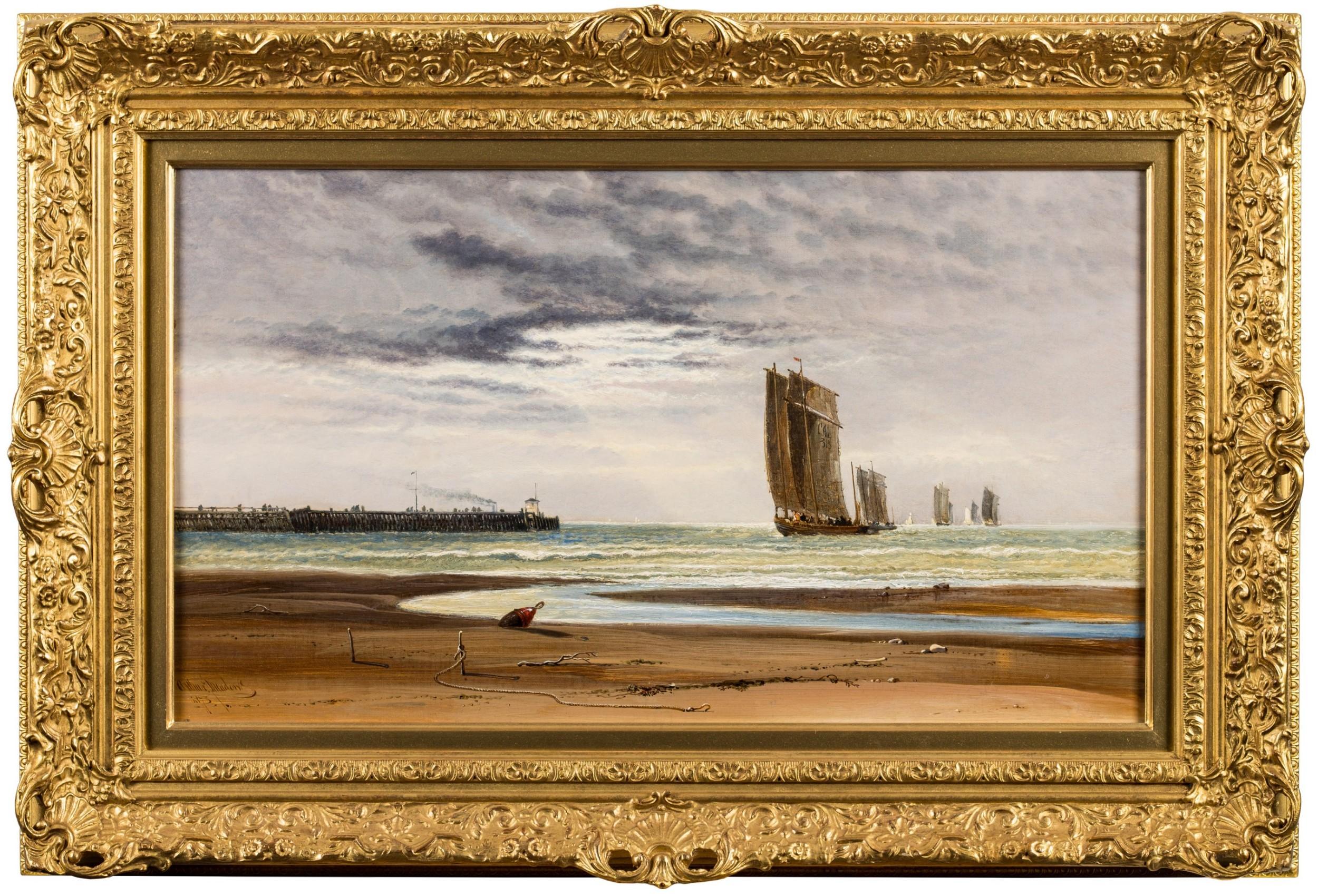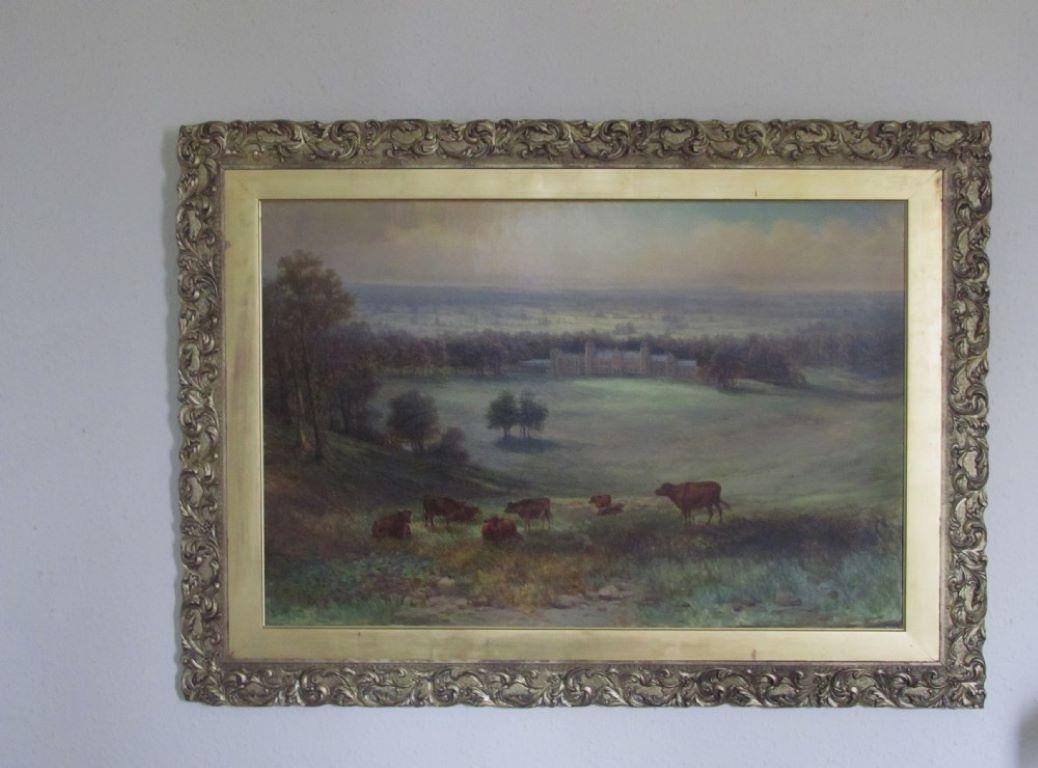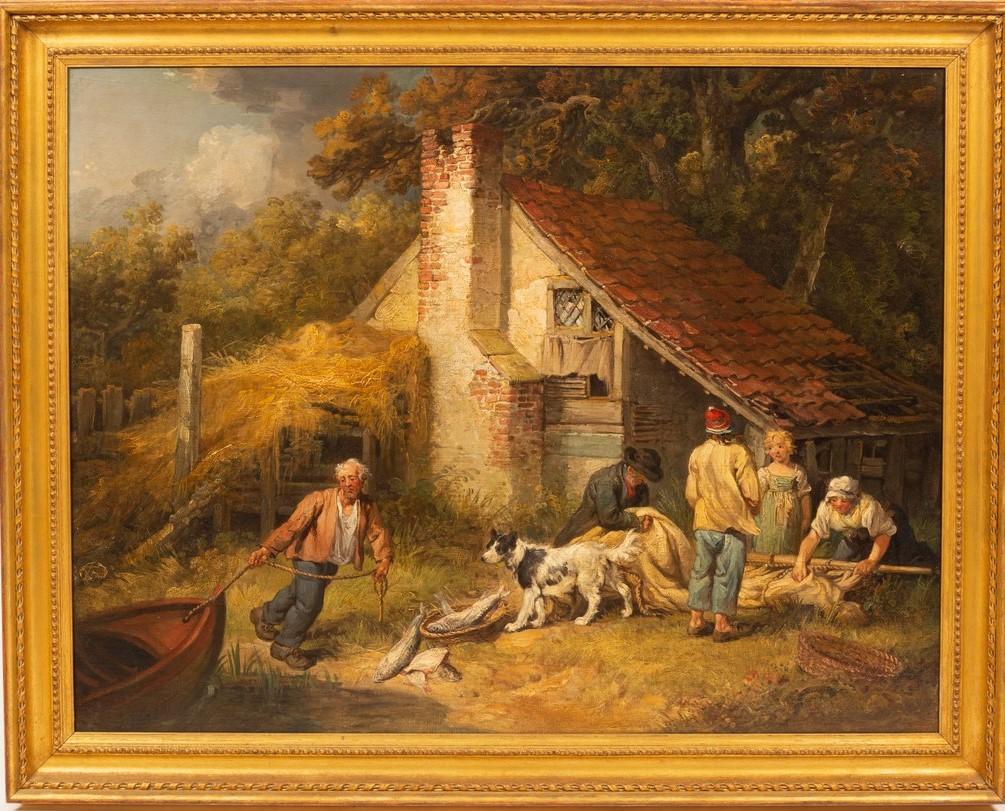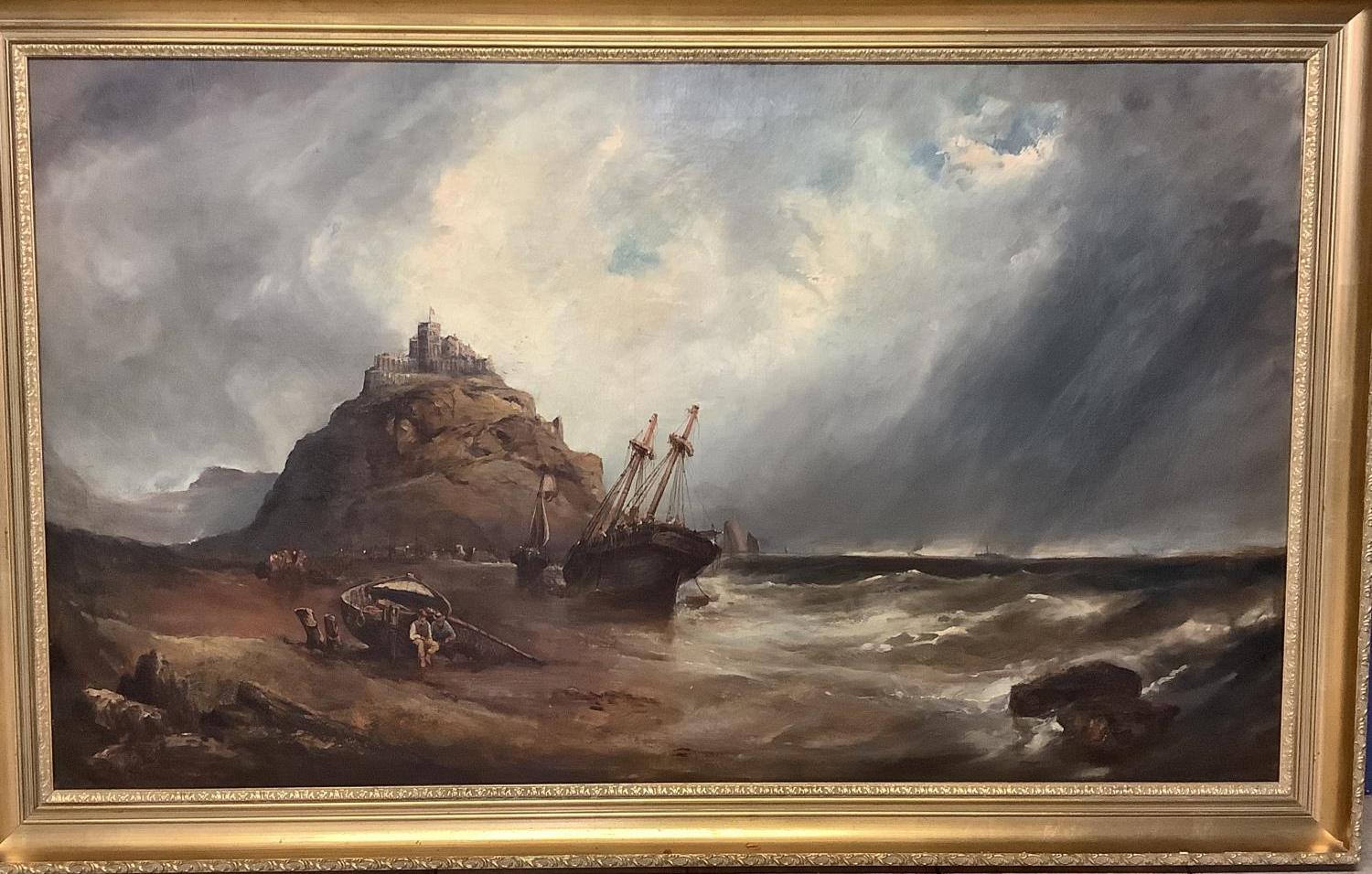Items Similar to Herding cattle through a wooded river landscape
Want more images or videos?
Request additional images or videos from the seller
1 of 9
James StarkHerding cattle through a wooded river landscape
About the Item
James Stark (1794-1859)
Herding cattle through a wooded river landscape
Oil on canvas
Canvas Size 18 x 24 in
Framed Size 23 x 29 in
James Stark (1794-1859): A Pioneer in Landscape Painting Born on a crisp autumn morning in Edinburgh, Scotland, in 1794, James Stark emerged as a luminary destined to leave an indelible mark on the world of art. Growing up against the backdrop of Scotland's breathtaking landscapes, Stark's childhood was imbued with the raw beauty that would later inspire his artistic endeavors. From a young age, Stark displayed an innate affinity for the natural world, spending hours sketching the rolling hills and dramatic seascapes that surrounded his home. Recognizing his talent, his family nurtured his artistic pursuits, laying the foundation for a future master of landscape painting. In 1810, at the age of sixteen, Stark embarked on a formal artistic education, apprenticing under the esteemed landscape painter Alexander Nasmyth. Under Nasmyth's tutelage, Stark honed his skills, mastering the delicate interplay of light and shadow that would become a hallmark of his later works. Stark's insatiable curiosity led him beyond the confines of Edinburgh. He undertook extensive travels across the Scottish Highlands and the English countryside, capturing the essence of each locale with a keen eye and meticulous brushwork. These journeys became the crucible in which Stark forged his distinctive style, blending realism with a poetic interpretation of nature. In 1820, Stark embarked on the Grand Tour, a rite of passage for many European artists seeking inspiration from the continent's diverse landscapes. Venturing through the Alps, the Italian countryside, and the shores of the Mediterranean, Stark's canvas became a visual diary of his encounters with nature's majesty. His depictions of Alpine peaks and sun-drenched Italian vistas garnered acclaim across Europe, establishing Stark as a leading figure in the burgeoning Romantic landscape painting movement. In 1825, Stark returned to his native Scotland, where he continued to capture the rugged beauty of the Highlands and the ethereal quality of its lochs. His works, characterized by a deep emotional resonance and a meticulous attention to detail, became sought-after treasures in artistic circles. As a founding member of the Royal Scottish Academy, Stark contributed significantly to the cultural tapestry of his homeland. His legacy endures through the generations, a testament to his ability to elevate landscape painting into a sublime expression of emotion and reverence for the natural world. James Stark passed away in 1859, leaving behind a rich legacy that continues to inspire and captivate art enthusiasts worldwide. His masterful brushstrokes and profound connection to nature ensure that the name James Stark remains synonymous with the golden age of landscape painting in Scotland.
- Creator:James Stark (1794 - 1859)
- Dimensions:Height: 23 in (58.42 cm)Width: 29 in (73.66 cm)
- Medium:
- Movement & Style:
- Period:
- Condition:
- Gallery Location:Stoke, GB
- Reference Number:1stDibs: LU446313865442
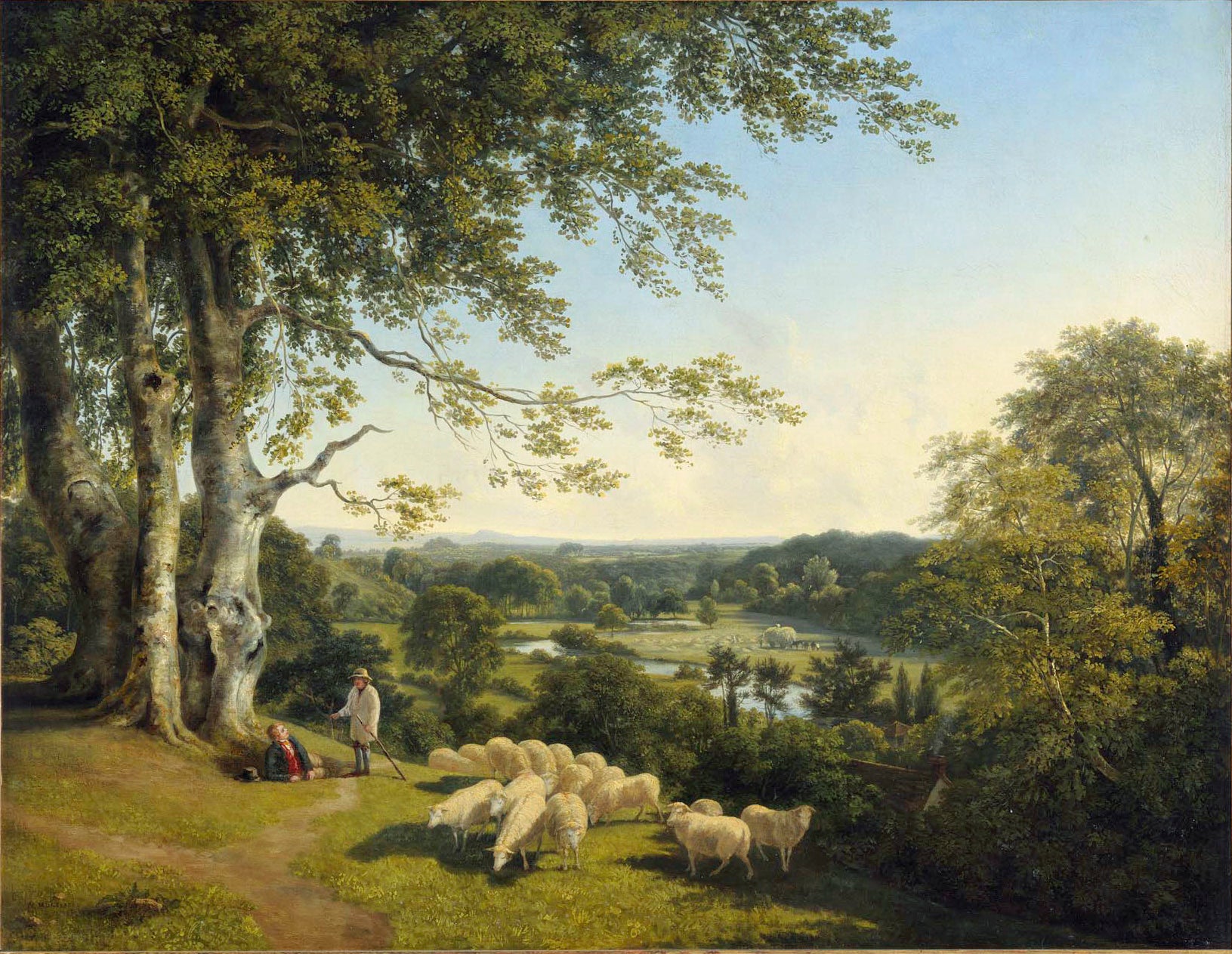
About the Seller
5.0
Recognized Seller
These prestigious sellers are industry leaders and represent the highest echelon for item quality and design.
Platinum Seller
These expertly vetted sellers are 1stDibs' most experienced sellers and are rated highest by our customers.
Established in 2009
1stDibs seller since 2016
146 sales on 1stDibs
Typical response time: 3 hours
Associations
LAPADA - The Association of Arts & Antiques DealersInternational Confederation of Art and Antique Dealers' AssociationsThe British Antique Dealers' Association
- ShippingRetrieving quote...Ships From: Andover, United Kingdom
- Return PolicyA return for this item may be initiated within 2 days of delivery.
More From This SellerView All
- Gimcrack with jockey up, wearing the colours of 1st Earl GrosvenorLocated in Stoke, HampshireJohn Nost Sartorius (London 1759-1828) Gimcrack with jockey up, wearing the colours of Richard Grosvenor, 1st Earl Grosvenor Inscribed and signed 'Gi...Category
18th Century Old Masters Animal Paintings
MaterialsOil
- A bay hunter in a landscapeBy Charles TowneLocated in Stoke, HampshireCharles Towne (1763-1840) A bay hunter in a landscape signed and dated 'Charles Towne Pinxit 1816' lower left Oil on canvas Painting Size - 20 x 26 Framed Size - 25 x 31 in Provena...Category
Early 19th Century Old Masters Landscape Paintings
MaterialsOil, Canvas
- A dark bay racehorse held by his trainer at Newmarket HeathLocated in Stoke, HampshireBenjamin Killingbeck (act. 1769-1783) A dark bay racehorse held by his trainer on a racecourse Oil on canvas Canvas Size - 40 x 50 in Framed Size ...Category
18th Century Old Masters Animal Paintings
MaterialsOil
- Fisherfolk unloading the days catchBy John Thomas SerresLocated in Stoke, HampshireJohn Thomas Serres (1759-1825) Fisherfolk unloading the days catch Oil on canvas Canvas Size - 17 x 25 in Framed Size - 22 x 30 in John Thomas Serres, a luminary in the realm of mar...Category
18th Century Old Masters Landscape Paintings
MaterialsOil
- View of Shipping on the River Avon from Durdham Down, near BristolLocated in Stoke, HampshireThomas Smith of Derby (c. 1710-1767) View of Shipping on the River Avon from Durdham Down, near Bristol, 1756 Oil on canvas Canvas size - 20 x 47 in Framed size - 26 x 53 in Provena...Category
18th Century Old Masters Landscape Paintings
MaterialsOil
- A large wooded river landscape with droversBy Benjamin Barker of BathLocated in Stoke, HampshireBenjamin Barker of Bath (Pontypool 1776-1838) A wooded river landscape with drovers Signed and dated 'B.Barker pinxt/ 1807' lower right Oil on canvas 46 x 68 3/4 in (116.8 x 174.5 cm...Category
18th Century Old Masters Landscape Paintings
MaterialsOil
You May Also Like
- Early oil depicting the Great Fire of LondonLocated in London, GBThe Great Fire of London in September 1666 was one of the greatest disasters in the city’s history. The City, with its wooden houses crowded together in narrow streets, was a natural fire risk, and predictions that London would burn down became a shocking reality. The fire began in a bakery in Pudding Lane, an area near the Thames teeming with warehouses and shops full of flammable materials, such as timber, oil, coal, pitch and turpentine. Inevitably the fire spread rapidly from this area into the City. Our painting depicts the impact of the fire on those who were caught in it and creates a very dramatic impression of what the fire was like. Closer inspection reveals a scene of chaos and panic with people running out of the gates. It shows Cripplegate in the north of the City, with St Giles without Cripplegate to its left, in flames (on the site of the present day Barbican). The painting probably represents the fire on the night of Tuesday 4 September, when four-fifths of the City was burning at once, including St Paul's Cathedral. Old St Paul’s can be seen to the right of the canvas, the medieval church with its thick stone walls, was considered a place of safety, but the building was covered in wooden scaffolding as it was in the midst of being restored by the then little known architect, Christopher Wren and caught fire. Our painting seems to depict a specific moment on the Tuesday night when the lead on St Paul’s caught fire and, as the diarist John Evelyn described: ‘the stones of Paul’s flew like grenades, the melting lead running down the streets in a stream and the very pavements glowing with the firey redness, so as no horse, nor man, was able to tread on them.’ Although the loss of life was minimal, some accounts record only sixteen perished, the magnitude of the property loss was shocking – some four hundred and thirty acres, about eighty per cent of the City proper was destroyed, including over thirteen thousand houses, eighty-nine churches, and fifty-two Guild Halls. Thousands were homeless and financially ruined. The Great Fire, and the subsequent fire of 1676, which destroyed over six hundred houses south of the Thames, changed the appearance of London forever. The one constructive outcome of the Great Fire was that the plague, which had devastated the population of London since 1665, diminished greatly, due to the mass death of the plague-carrying rats in the blaze. The fire was widely reported in eyewitness accounts, newspapers, letters and diaries. Samuel Pepys recorded climbing the steeple of Barking Church from which he viewed the destroyed City: ‘the saddest sight of desolation that I ever saw.’ There was an official enquiry into the causes of the fire, petitions to the King and Lord Mayor to rebuild, new legislation and building Acts. Naturally, the fire became a dramatic and extremely popular subject for painters and engravers. A group of works relatively closely related to the present picture have been traditionally ascribed to Jan Griffier...Category
17th Century Old Masters Landscape Paintings
MaterialsOil, Canvas
- Stag Hunting in the Vicinity of Nuremberg by a German Artist Peter von BemmelLocated in PARIS, FRThis small landscape shows a hunting scene: two riders are chasing a stag with their dogs at the edge of a forest. Signed by Peter von Bemmel, it is typical of the production of this...Category
1720s Old Masters Landscape Paintings
MaterialsCopper
- Arthur Joseph Meadows 19th Century Seascape Off CalaisBy Arthur Joseph MeadowsLocated in York, GBA very fine painting by the renowned seascape painter Arthur Joseph Meadows,Off Calais; fishing fleet returning at low tide. Housed in an antique style gilt frame the size overall is...Category
19th Century Old Masters Landscape Paintings
MaterialsOil
- 19th Century, Victorian, landscape , cows , Country House Samuel Lawson BoothLocated in York, GBS Lawson Booth : Country House in extensive landscape with cattle in the foreground, oil on canvas signed and dated '98, 60cm x 90cm (35x23 inches approx image) size with frame appro...Category
19th Century Old Masters Landscape Paintings
MaterialsOil
- James ward landscape oil Bringing in the CatchBy James WardLocated in York, GBJames ward landscape oil Bringing in the Catch A charming scene of a family "bringing in the catch" showing figures outside a cottage, man pullng in the boat with his dog watching by...Category
19th Century Old Masters Landscape Paintings
MaterialsOil
- St Michael's Mount, Cornwall Seascape OilLocated in York, GBThis early 20th century oil on canvas depicts a nautical scene with a view of St Michaels Mount beyond. Although as yet, not attributed to a particular artist,this painting has cl...Category
Early 20th Century Old Masters Landscape Paintings
MaterialsOil


